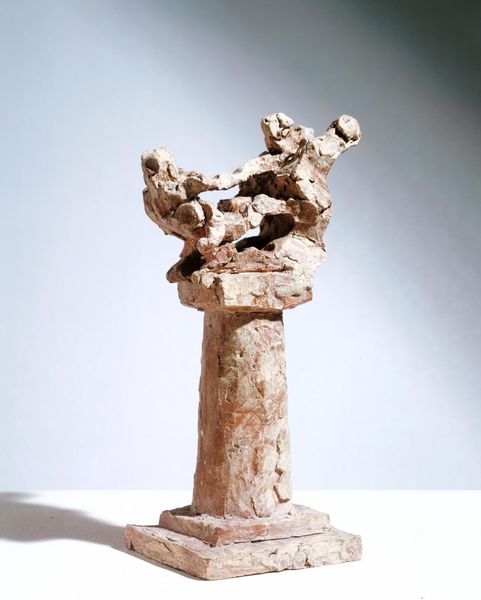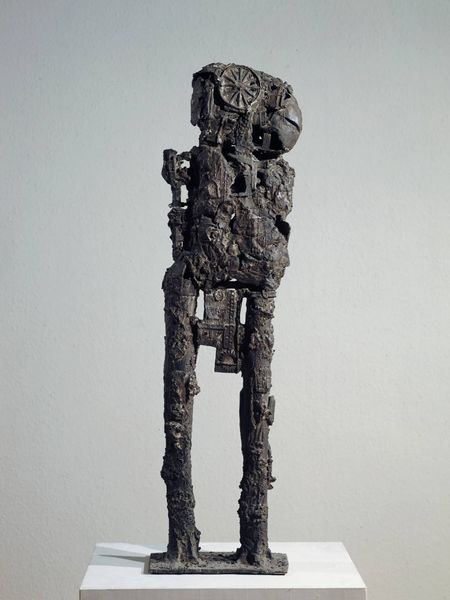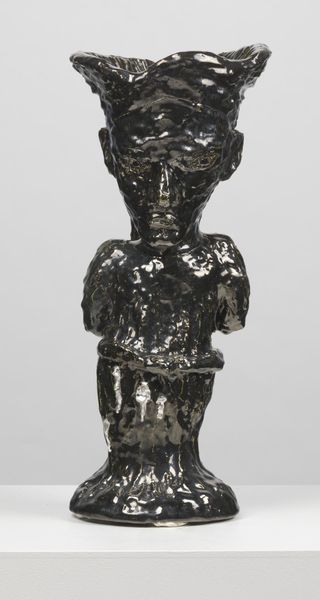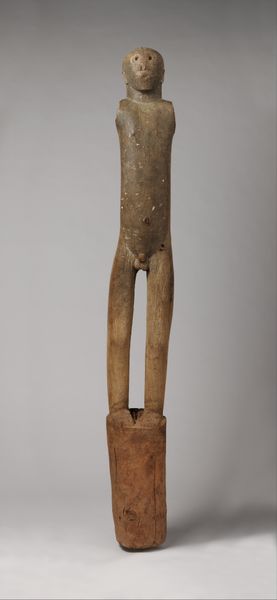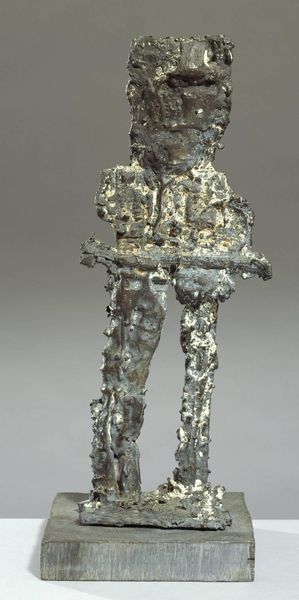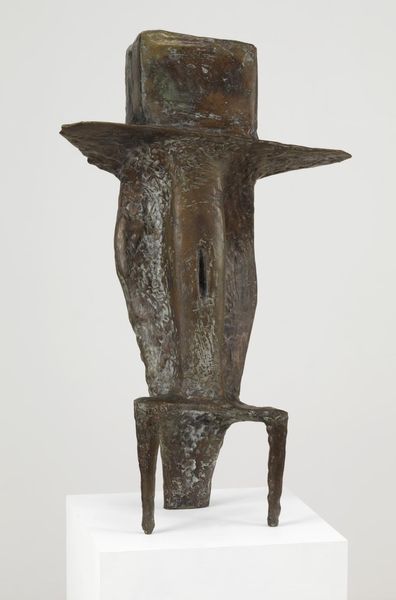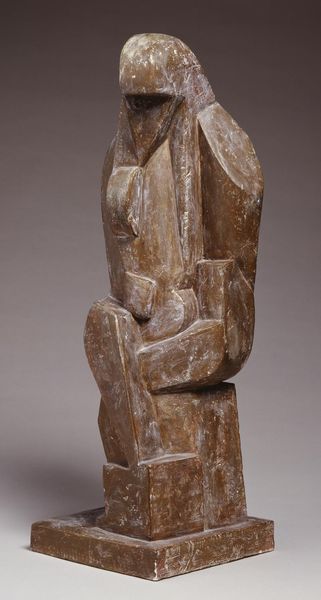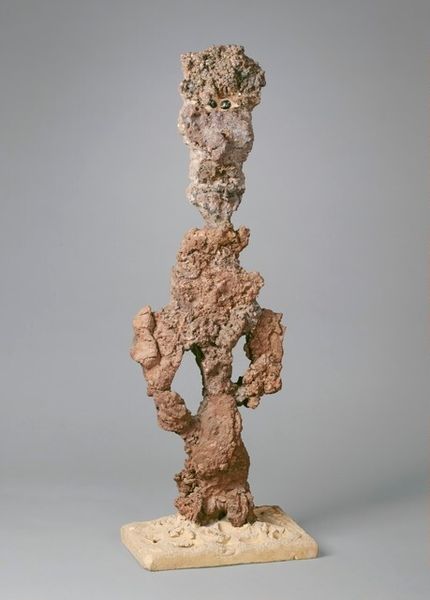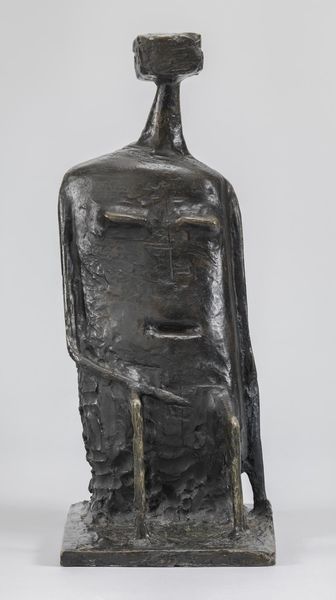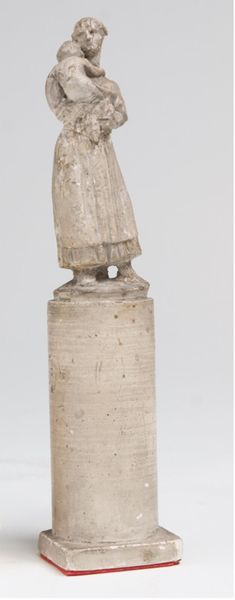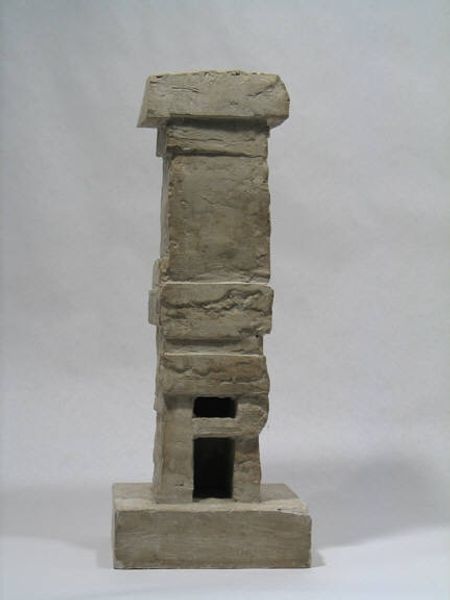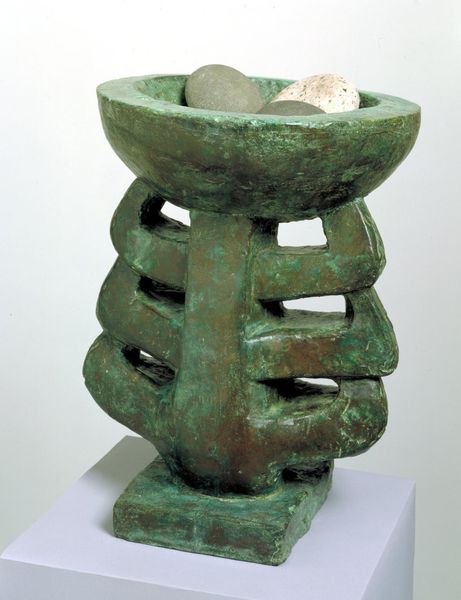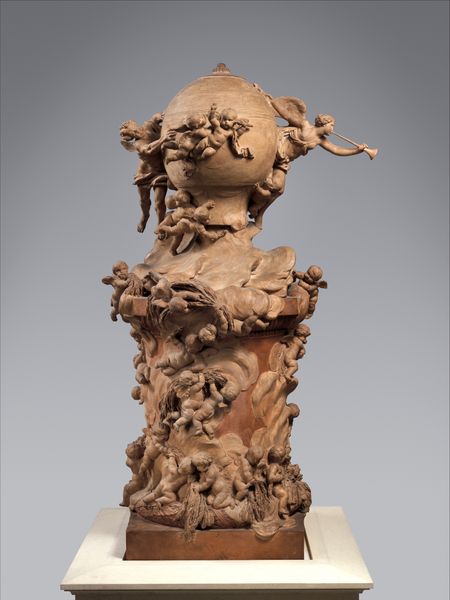
Dimensions: object: 692 x 370 x 320 mm, 36.4 kg
Copyright: © The Eduardo Paolozzi Foundation | CC-BY-NC-ND 4.0 DEED, Photo: Tate
Editor: This is Eduardo Paolozzi's bronze sculpture, Cyclops. It's incredibly textured, almost like a ruined city. What do you make of all these layered images? Curator: It’s a powerful example of how artists embed cultural memory within form. The fragmented imagery speaks to our collective unconscious, doesn't it? Consider how mythic archetypes like the Cyclops resonate across time, embodying both brute force and vulnerability. Editor: That's interesting, I hadn't thought about vulnerability. Curator: The single eye, the concentrated focus, can also represent a limited perspective. How does that resonate with you, thinking about how we perceive the world? Editor: I guess it reminds me to consider different viewpoints. Thanks! Curator: Indeed, art helps us expand our own limited view.
Comments
tatebritain 3 months ago
⋮
http://www.tate.org.uk/art/artworks/paolozzi-cyclops-t06858
Join the conversation
Join millions of artists and users on Artera today and experience the ultimate creative platform.
tatebritain 3 months ago
⋮
A central theme in the work of British sculptor Eduardo Paolozzi has been the condition of man in the technological age. From 1950 the artist made a series of disembodied heads, such as this one, whose surface texture is derived from broken locks, rivets and other debris of mass manufacture. Here and there the armoured head is punctured to reveal a hollow interior. In classical mythology the Cyclops were a race of one-eyed giants who forged thunderbolts for Zeus. Paolozzi’s faceless and battered creature appears both heroic and pathetic. Gallery label, July 2012
